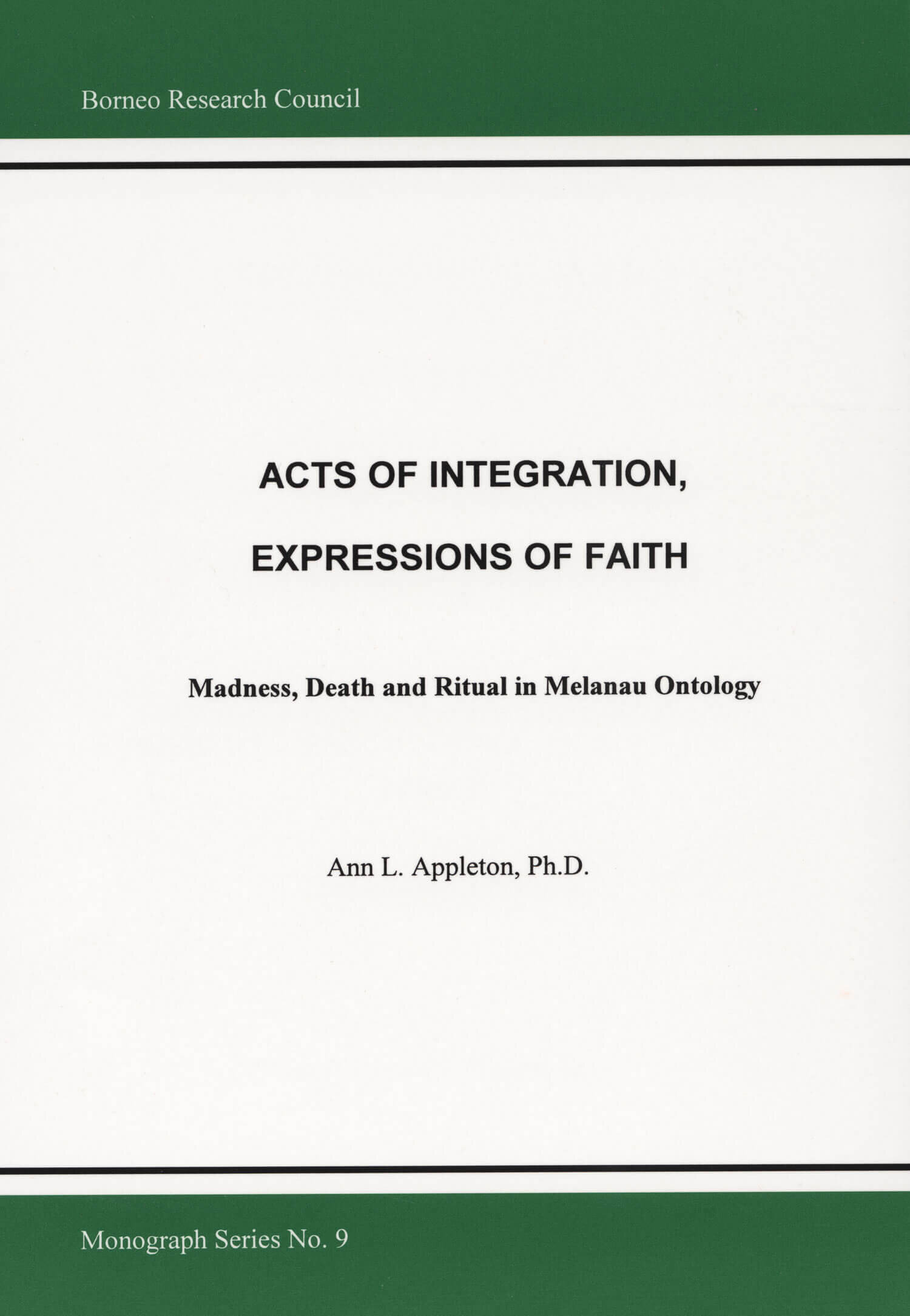By Ann L. Appleton, Ph.D.
This monograph, based on Ann Appleton's doctoral research, is a significant ethnographic contribution to psychiatric anthropology, and more broadly to current debate within medical anthropology on the relationship between suffering, illness, healing and culture. It also represents a signal contribution to Melanau ethnography, developing a number of areas first essayed by Stephen Morris in his earlier work among the Oya Melanau.
Appleton's research was carried out in Mukah, in the heartland of the Melanau region of Sarawak. Lying on the coast in an angle between river and sea, with the larger city of Sibu to the south and the more rapidly developing Bintulu to the east, Mukah is part fishing village, part market town, and part government administrative center. As with the rest of Sarawak, its history is one of successive colonization, first by the Brunei Pengirans, who introduced Malay culture and Islam to the Melanau, and then by the Brookes, in whose time Christianity arrived in the form of Roman Catholicism.
Paperback
ISBN 1-929900-06-6
Discounted shipping rates for large orders are possible if an order is placed via email at brc@borneoresearchcouncil.org.
By Ann L. Appleton, Ph.D.
This monograph, based on Ann Appleton's doctoral research, is a significant ethnographic contribution to psychiatric anthropology, and more broadly to current debate within medical anthropology on the relationship between suffering, illness, healing and culture. It also represents a signal contribution to Melanau ethnography, developing a number of areas first essayed by Stephen Morris in his earlier work among the Oya Melanau.
Appleton's research was carried out in Mukah, in the heartland of the Melanau region of Sarawak. Lying on the coast in an angle between river and sea, with the larger city of Sibu to the south and the more rapidly developing Bintulu to the east, Mukah is part fishing village, part market town, and part government administrative center. As with the rest of Sarawak, its history is one of successive colonization, first by the Brunei Pengirans, who introduced Malay culture and Islam to the Melanau, and then by the Brookes, in whose time Christianity arrived in the form of Roman Catholicism.
Paperback
ISBN 1-929900-06-6
Discounted shipping rates for large orders are possible if an order is placed via email at brc@borneoresearchcouncil.org.

